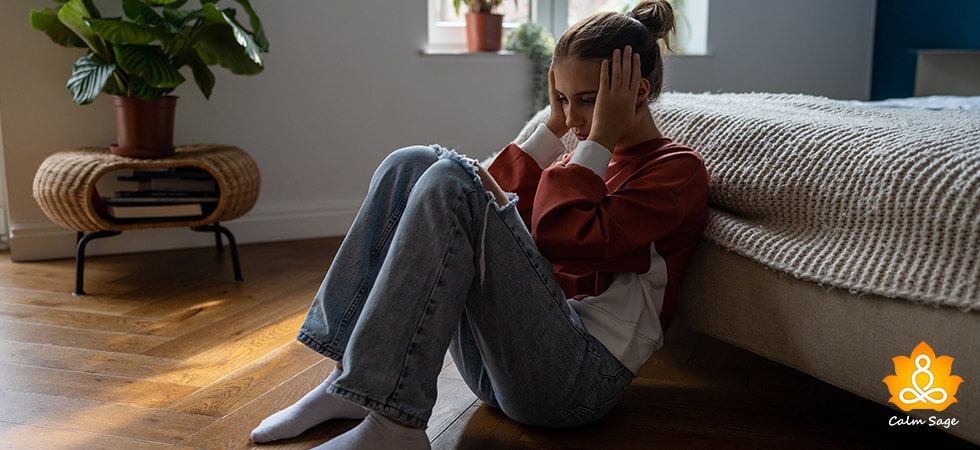A Guide to Exposure Therapy for Social Anxiety Disorder (SAD)

If you’re too tired of the constant nerves, the racing heartbeat, and the overwhelming fear that comes during social interactions and want to live without the constant fear of social rejection, then you’re not alone. Social anxiety can be daunting, but there’s a beacon of hope for you dressed as exposure therapy.
Get your confident self-back and say, “Enough” to social anxiety disorder. Social anxiety or social phobia can be a crippling anxiety condition that can affect how you engage and behave in public spaces and social interactions. It can often cause feelings of intense fear and self-consciousness, making your everyday interactions seem like challenges.
If you’re grappling with social anxiety disorder then there is one treatment approach that might help you. Exposure therapy for social anxiety. It might not seem promising, but there have been studies that show the effectiveness of exposure therapy for treating social anxiety.
Keep reading to understand how exposure therapy for social anxiety disorder can help, how it works, and where you can get help.
What Is Social Anxiety?
Before we delve into exposure therapy, let’s first take some time to understand social anxiety.
Social anxiety is more than just feeling anxious or nervous in social situations and interactions. Social anxiety involves an intense fear of social judgment, embarrassment, and rejection. People with social anxiety go out of their way to avoid situations where they have to interact with others. More often than not, social anxiety can cause isolation and depression.
Common social anxiety triggers can involve;
- Speaking in public
- Meeting new people
- Eating in front of others
- Going to job interviews
- Going on a date
- Going grocery shopping
- Calling someone for an appointment, etc.
Avoidance in social anxiety can look a lot like making excuses to get out of situations, leaving early, making no eye contact, not answering texts or calls, and even social isolation. These behaviors may make someone feel comfortable, but that’s only temporary. Avoidance of social anxiety can also be a way to distract oneself from distressing thoughts. These behaviors are typical in social anxiety disorders, but not addressing the root cause of such behaviors can cause long-term pain and distress.
What Is Exposure Therapy?
Exposure therapy is a psychological approach to treatment that is used to reduce anxiety by gradually exposing you to situations or stimuli that trigger your fear and anxiety. In the context of social anxiety, that means facing social situations, even if they make you uncomfortable, under the guidance of a counselor or a therapist.
Exposure therapy for social anxiety differs from other traditional approaches such as talk therapy. This is more of a hands-on therapy approach and can help you build resilience through experience.
More often than not, VR exposure therapy is used to help you get the idea of gradual exposure to your triggers. Virtual reality exposure therapy uses a VR headset that can present a sense of safe and controlled exposure to social anxiety triggers without actually going out for social interactions. This type of exposure therapy is most commonly used to treat social anxiety and specific phobias.
How Does Exposure Therapy for Social Anxiety Work?
Exposure therapy is an approach that helps treat specific issues without using medications. This can also work well with people who struggle with social anxiety disorder. Exposure therapy works by helping you confront your fears in a controlled and supportive environment. Here’s how it typically goes:
1. Assessment:
The first session is more about assessing your triggers and understanding the symptoms of your social anxiety. A therapist would work with you to understand what social situation triggers your anxiety and how it affects you.
2. Hierarchy:
In later sessions, a hierarchy of anxiety-provoking situations is created, from the least anxiety-provoking ones to the most challenging ones. This hierarchy helps you slowly build confidence that you can overcome your social triggers gradually.
3. Gradual Exposure:
As the session progresses, you begin facing the least anxiety-provoking situations and triggers. As you become more comfortable with each situation, you progress to more challenging situations. This gradual exposure doesn’t always happen in one session.
4. Introduction to Coping Strategies:
Throughout the exposure process, the therapist will help you develop healthy coping strategies to manage your anxiety and help you learn that your fears are often irrational and easily overcome. Later, you will sit and reflect on your experiences with your therapist to understand how you did and felt, and how you can move forward.
Examples of Gradual Exposure to Social Anxiety
As you move forward with your therapy, your therapist might encourage you to face your fears. Here are some examples of exposure techniques that your therapist might encourage you to engage in;
- VR Therapy
- Making scripted phone calls
- Asking someone what time it is
- Joining an improv class
- Role-playing with friends and family
- Talking to cashiers or clerks at a store
Is Exposure Therapy For Social Anxiety Effective?
Exposure therapy has proven to be a highly effective treatment approach for social anxiety disorder. Various studies have shown great improvement in the symptoms of social anxiety in people who have undergone exposure therapy for social anxiety. Exposure therapy is considered one of the most effective evidence-based approaches for social anxiety disorder (SAD).
In a 2019 study, it was found that exposure therapy was effective when combined with cognitive-behavioral therapy, a talk therapy approach. Exposure therapy with CBT helped people reframe their negative thought patterns related to anxiety and social anxiety.
If you or someone you know has been diagnosed with social anxiety disorder, then you can talk to your therapist about getting exposure therapy for social anxiety. A professional can help assess your situations and recommend appropriate treatment for them. You can also reach out to online resources for help if you’re not comfortable reaching out to a professional face-to-face.
You can also consider joining support groups where you can find guides and recommendations from people who have gone through similar experiences with exposure therapy.

20% OFF on Your First Month on Online Therapy with Code CALMSAGE
Wrapping Up…
Exposure therapy sounds like a promising approach for people struggling with social anxiety disorder. With the help of gradual exposure, you can confront your fears in a supportive, controlled, and safe environment and regain control of your lives, one step at a time. Exposure therapy for social anxiety has been commended as one of the best evidence-based approaches, so if you’re thinking about this treatment, then talk to your therapist for more information.
With the right approach and help, you can develop a healthier and positive relationship with your social anxiety and live your life with confidence.
I hope this article helped you understand the effectiveness of exposure therapy for social anxiety disorder. Let me know what you think about this article in the comments section below.
Take Care!




















